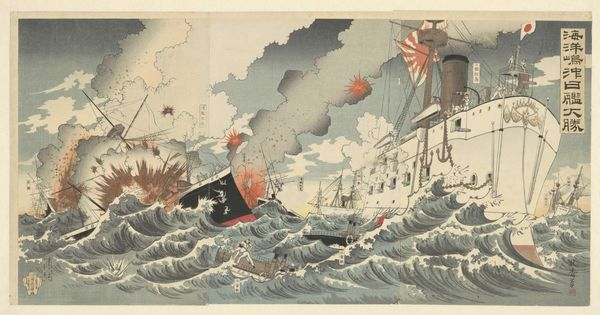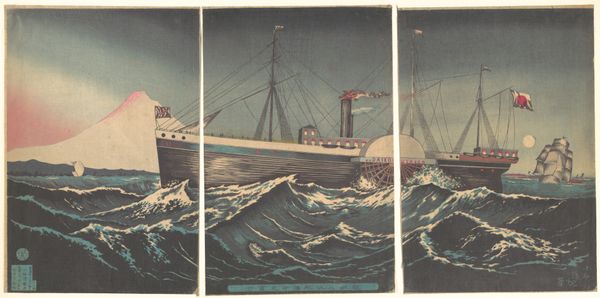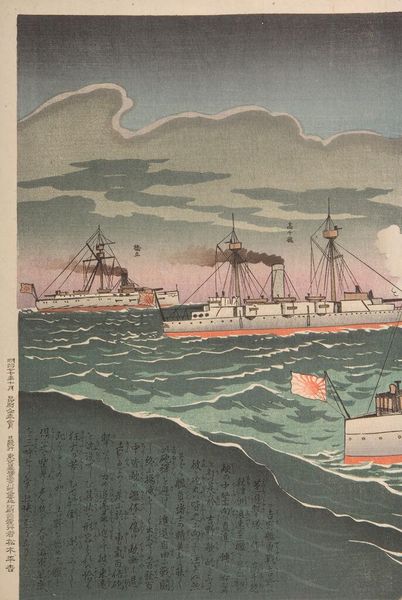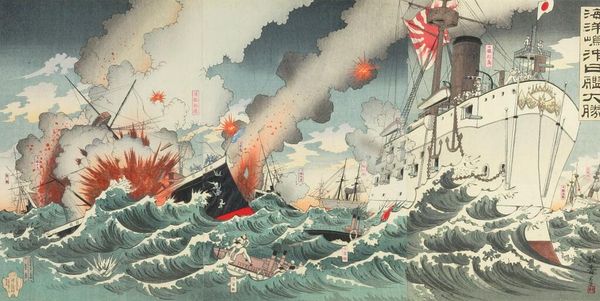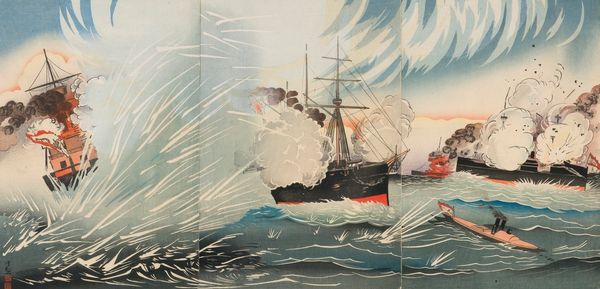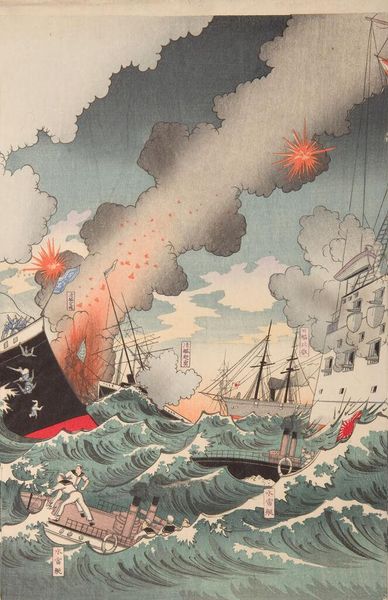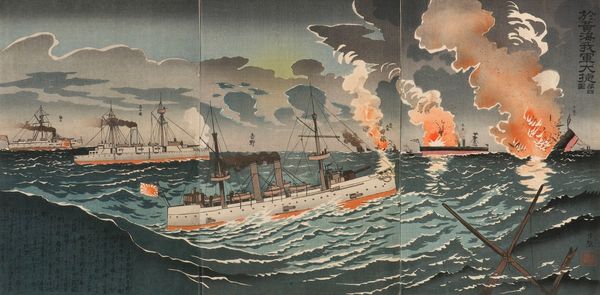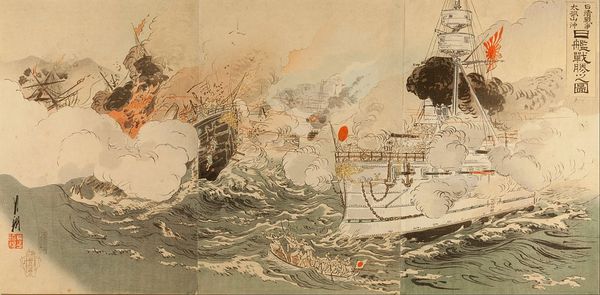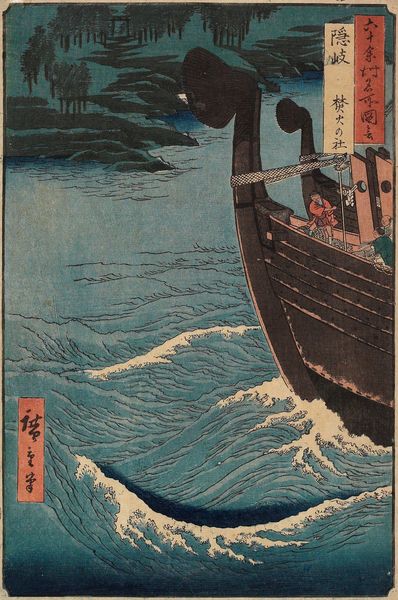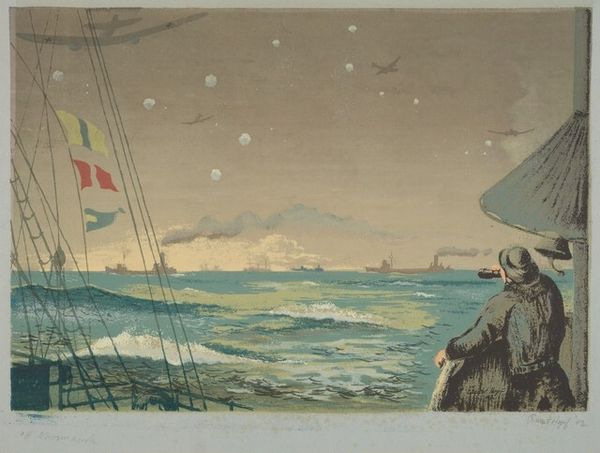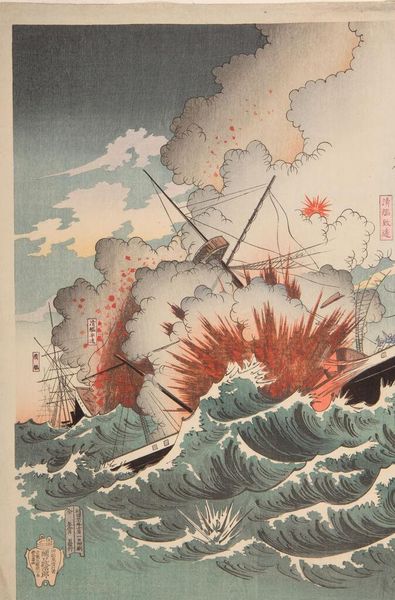
Copyright: Public Domain: Artvee
Curator: Sobering, isn't it? Those imposing warships battling against the rough seas. Editor: Indeed. And the composition… chaotic. The churning water dominates the frame. Almost overwhelming, wouldn't you say? Curator: This is "Our Fleet of Warships Bombarding Dalian Bay," a watercolor print made in 1894 by Kobayashi Kiyochika. It depicts a naval battle from the First Sino-Japanese War. Kiyochika's work often highlighted the modernization of Japan through its military prowess. Editor: Ah, yes. That dramatic lighting emphasizes the movement, guiding the eye across the surface—particularly that light reflecting on the waves, and the plume of smoke that obscures the rest of the ship. The sharp lines where sea meets hull—revealing an inherent conflict through the piece. Curator: The context of this image is crucial. This war was about Japan asserting itself on the world stage, wrestling control away from a weakening Qing dynasty. The visual narrative plays into the nationalistic fervor that characterized this period, celebrating imperial expansion. It definitely shows how visual culture can promote such sentiments, with devastating human costs that reverberate today. Editor: I appreciate your approach. Still, consider how the artist masterfully handles watercolor, even though it's a print, a relatively mass-producible medium at the time. Look at how he suggests the spray with short white strokes, evoking the immense power of the waves as much as the destructive capacities of the naval weaponry. The interplay of darkness and sudden bright flares is incredible in capturing the kinetic dynamism. Curator: Precisely, Kiyochika captures both the literal action of bombardment and its larger implications of disruption to the established order of East Asia. What this visual propaganda elides are stories of colonial exploitation, silencing many subaltern perspectives about Japanese imperialism. Editor: I find it remarkable how those formal choices generate an experience of awe and unease, regardless of the specific historical narrative it tries to illustrate. The almost abstract depiction of chaotic energy manages to make a statement about the scale and ferocity of modern warfare itself. Curator: Looking at it, I am reminded that art doesn’t exist in a vacuum, and it must be a reflection on the complicated narratives and tensions such imagery served. Editor: Well, from its structural harmonies to those tumultuous juxtapositions, Kiyochika gives us plenty to consider.
Comments
No comments
Be the first to comment and join the conversation on the ultimate creative platform.
